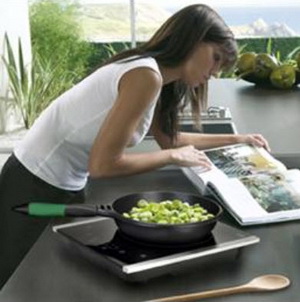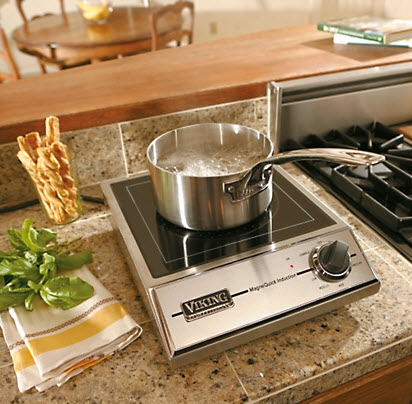Holiday Cooking has everything to do with flexible kitchen design. Flexibility in kitchen design, as I define it, is having the foresight to plan adequately for multiple lifestyle scenarios such as holiday cooking...as simple as that. Foresight is security!
 I do a lot of thinking and observing in and immediately around the borders of my kitchen, both as the action is happening and in later reflection. I am nearly always taking a fresh as well as an analytical look at what happens in my own kitchen. I'd like to share some thoughts about what happened in my kitchen over last weekend which was very revealing.
I do a lot of thinking and observing in and immediately around the borders of my kitchen, both as the action is happening and in later reflection. I am nearly always taking a fresh as well as an analytical look at what happens in my own kitchen. I'd like to share some thoughts about what happened in my kitchen over last weekend which was very revealing.
My husband and I hosted a dinner for our friends, just one other couple. I chose the menu, not for the number of pots and pans to be used, but for the food I wished to serve. Nothing unusual about that. I have a 36" gas cooktop in my kitchen which I inherited when I moved to this home a year ago.
A question: Is there anyone who feels that a 36" five burner cooktop is truly useful? If you find this cooktop useful, please comment, I'm waiting to be enlightened! Me, I'm convinced it's not useful beyond four burners and has few advantages over a 30" size cooktop...and this weekend was my final realization of that. The small extra space between the side burners is of little advantage. That said, it's a completely subjective statement, I know.
Needing numerous pieces of cooking equipment in the course of preparing the main course, I found myself stacking one pan on top of another as dishes needed to be removed from the heat and/or replaced with another pot since the surrounding countertop was only partially available. It felt like, and was, near chaos, as I think back. It was the antithesis of enjoyable, and I love to cook.
This past weekend's cooking experience surely illustrated the importance of countertop space! But, in giving thought to how a kitchen can be, perhaps, more orderly and efficient during the cooking process, flexibility came to mind. One flexible solution? A portable induction cooktop. I'd like to share two good brand name portable induction cooktops with you. Let's also compare a few of the more important specs.

Viking Portable Induction Cooker and Fagor's Portable Induction Cooktop
POWER:
- Viking: 1800 watts
- Fagor: 1300 watts
Comment: Be aware that the watts of a typical induction burner on a cooktop is in the area of 3000. That said, even at 1800 watts, it may not be the best idea to keep a dish cooking on that level for extended periods, given the likelihood of a lack of exhaust ventilation where the portable cooktop is placed. Think about how much power you need...is it for low heat/simmering which could be very helpful, or to boil that pot of water, or both?
SIZE/WEIGHT:
- Viking: 12"x15" 17 lbs
- Fagor: 12"x14" 7 lbs
CONTROLS:
- Viking: Knob with six power levels including simmer/infinite settings between levels
- Fagor: Touch Pad (with timer, counts down from 180 minutes) Has six power levels beginning at 190 degrees
Don't forget that cooking equipment used with induction cooktops will hold a normal household magnet as a test of its suitability. If it does not hold a magnet, it will not work with induction. Leave adequate space around a portable unit too so it does not overheat. Take a look to see if there is a particularly good spot in the kitchen that could be a designated "second cooking" area when your cooking is under pressure. Amazon has more portable induction cooktops for sale, but I know these two appliances as good, reliable, brands.
Had I had a portable unit, I think I would have been very much more organized in the kitchen and felt more in control. Portable induction cooktops have a viable place in many kitchens truly offering the ultimate in flexible cooking. Being in control feels goooood.
First image from Fagor, second...Viking.

